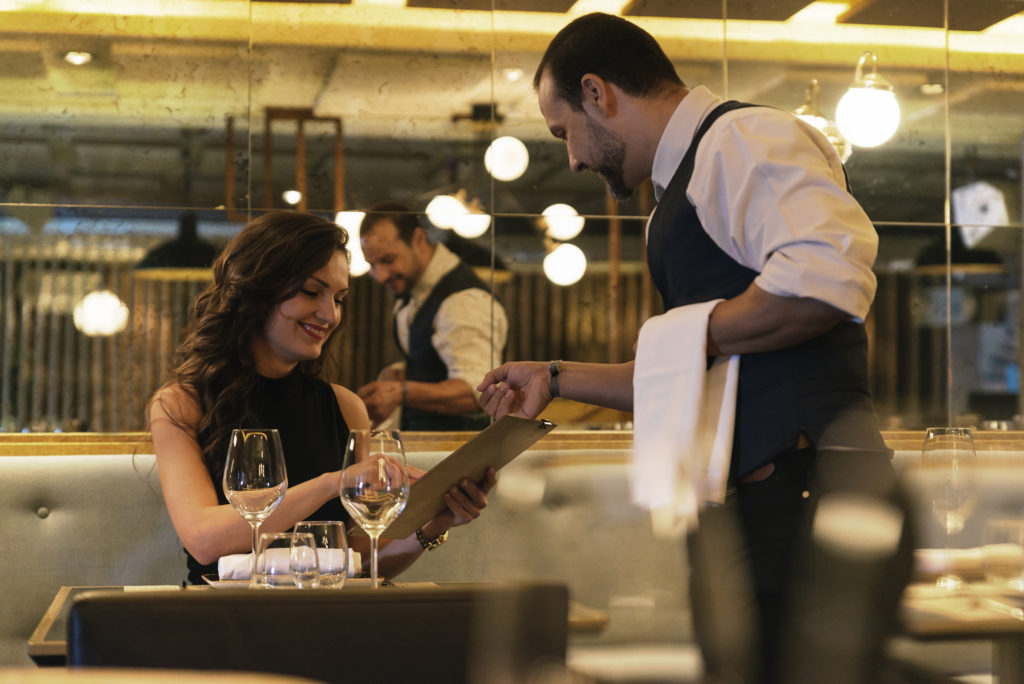- calendar_month August 3, 2023
Dining out is a major part of the quintessential Los Angeles experience. The convening of the city’s disparate cultures are mirrored in flavor combinations you won’t find anywhere else. You can discover culinary wonders to perk up palates from fine dining establishments to corner food trucks. But chasing that foodie fix is becoming more tough on the bank account. Now, a service fee restaurant patrons loathe is popping up more frequently on bills across the country. And a serious percentage of Los Angeles restaurants are jumping on the national trend. With a lack of communication as to where that service fees end up, patrons are walking away with a bad taste in their mouths.
Understanding the Service Fee Restaurant Owners Add to Your Bill
Photo credit: Envato
So, what is a service fee? Well, for starters, it’s a short question with a long answer. At its most basic, a service fee offers a means for a business to collect payment for goods or services. Pretty vague, right? That’s likely by design in most cases.
All kinds of businesses can charge service fees: ticket sales companies have been driving people nuts with them for decades. You’ll also sometimes see them in the hospitality and banking industries. And, of course, at restaurants.
In this year’s State of the Restaurant Industry report, the National Restaurant Association revealed that 15 percent of restaurants nationwide are instituting service fees. Maybe sensing some audacity in it, fast food restaurants skew lower at about 13 percent. Sit-down restaurants go higher at 17 percent.
But grabbing your food to go doesn’t necessarily exempt you from the mysterious charge. Delivery apps have even been known to tack it on, in addition to their usual delivery fee.
How to Know if You’re Being Charged a Service Fee
Photo credit: Envato
What we recognize today as the service fee restaurant owners are enforcing actually got its start as a post-pandemic provision. At that time, the charge was often referred to as a “Covid surcharge”. But with the pandemic firmly in the rearview mirror for most people, a Covid surcharge is harder to swallow than a second dessert. Still, restaurateurs unwilling to part with the income boost have decided to keep the extra charge under the less committal title of “service fee.”
And the fee isn’t exactly a modest one. Typically, the service fee restaurant owners are sliding onto the bottom of your bill runs anywhere from 15 to 20 percent. But, yes, some establishments aim higher.
Los Angeles restaurants need to report the service fee on your bill, so it’s pretty easy to spot. In most cases, the service fee will be a percentage of the bill, though some restaurants may opt for a flat dollar amount.
Who Benefits from a Restaurant Service Fee?
Photo credit: Envato
Unfortunately, patrons often mistake the service fee for an automatic gratuity for their server. But a service fee is not a tip. And often the money accrued from a service fee never makes it to waitstaff.
The federal government institutes tight regulations over gratuity payments. A blanket charge like “service fee” has a little more liberty. Ultimately, if you see a service fee on your bill, the only certainty is that the funds are going to the employer. From there, it’s up to the owner’s discretion how it gets allocated.
Obviously, a charge so vague leads to its fair share of confusion. Some patrons wanting to reward exceptional service are encouraged by the house to leave tips in addition to the mandatory service charge. But all too often, it’s the servers left to pay the price for customers who are confused or annoyed by the mystery charge.
Servers Against Service Fees
Photo credit: Envato
Some restaurateurs argue that the service fee adds protection to the waitstaff, who are otherwise at the whims of customer generosity. These restaurants use the service fee as an attempt to bypass tipping altogether. You may even find some Los Angeles restaurants that have removed a space for tipping on the bill. But the customer still has no guarantee that the service charge will ever find its way to their server’s pocket.
In many cases, servers have expressed that the service fees restaurant owners charge result in reduced income for waitstaff. Among Los Angeles restaurants, local Italian chain Jon & Vinny’s are at the center of a lawsuit involving service fees. Members of the chain’s waitstaff filed a class action lawsuit on June 20 over a reduction in tips. The alleged culprit? A baffling 18 percent service fee tacked onto every bill.
Do Los Angeles Restaurants Really Need Service Fees?
It’s easy to see this as simply yet another American tale of corporate greed. And in some cases, that’s undoubtedly the long and short of it. Especially when you see service fees lobbed onto the checks at mega chains.
Photo credit: Envato
But smaller restaurants aren’t as insulated from financial hardship. And in the wake of a pandemic that crippled and outright broke several eateries, these small business owners only found shrinking margins, labor shortages, and a clientele fatigued by inflation. These restaurateurs are facing down an industry that becomes less sustainable by the week. In the service fee, they find a flawed, but welcome reprieve.
Unfortunately, the cracks are showing and a replacement solution is nowhere to be found. Undercompensated staff continues to dwindle. And the patrons of Los Angeles restaurants and beyond only see nameless faceless owners with their palms out.
The service fee restaurant owners institute is popularly accused of subsidizing an owner’s out-of-pocket expenses by passing the buck to patrons. Speaking to The New York Times, one restaurateur put it succinctly by responding, “We are a business. All of our money comes from customers.”
Lack of Clarity Leaving Room for Offense
Photo credit: Envato
But for many diners, the charge itself is not the offense. It’s the deceptive means by which it’s delivered, and the vague terms which enshroud it. People want to know what they’re buying. But with service fees dispensed and distributed in countless ways, most of them behind closed doors, patrons are left to fill in the blanks.
Many times, waitstaff can’t even say for sure where that money goes. Sometimes, it goes back into the business. Other times, it goes to paying staff wages. And, unfortunately, sometimes it goes right into the owner’s bank account.
With owners arguing that inflation has driven up the prices of their dishes, the question arises: why not simply charge more for the food itself? Many business owners staunchly believe that people are not willing to pay more for the same meal that cost them five dollars less a couple years ago. So, instead they continue adding a vague service fee to the bottom of your bill. Some patrons don’t notice. Others see it, but don’t want an awkward confrontation.
Yet, the consensus is clear. Diners don’t like the new service fee restaurant owners have been tacking onto bills. And owners have no intention of giving the service fee up anytime soon. So, when you’re making the rounds at your favorite Los Angeles restaurants, you might want to ask in advance about any service fees. And don’t shoot the messenger. The waitstaff probably hates the service fee more than you do!






